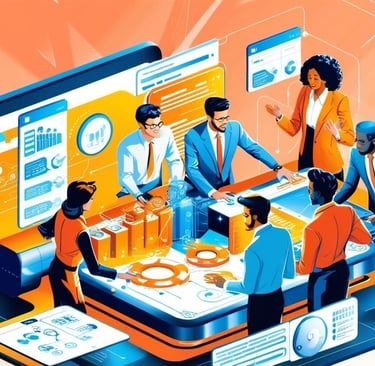New Book: Enterprise Application Optimization & Cost Reduction Guide For The Strategic CxO. Order Your Copy - https://www.amazon.com/dp/B0FLXPPNWP
IT Outsourcing and The Need For Continuous Modernization
This article explore the need for continuous modernization. Customers are asking for more value and innovation. This requires a change of mindset for service provider and the consumer of services. Both sides need to embrace constant change in the age of Artificial Intelligence.
Ashish G Bhatnagar
5/29/20252 min read


Why IT Outsourcing Needs Continuous Modernization?
Introduction
The IT outsourcing (ITO) landscape is evolving at an unprecedented pace. Traditional outsourcing models—once centered on cost reduction and operational efficiency—are now being redefined by digital transformation, cloud adoption, artificial intelligence (AI), and cybersecurity demands. To stay competitive, outsourcing providers must continuously modernize their services, technology stacks, and business models.
The Need for Continuous Modernization
Recent studies highlight a significant shift in outsourcing priorities. The share of IT operational budgets dedicated to outsourcing grew from 5.6% to 8.1% between 2022 and 2023, showing a strong inclination towards external IT services (Auxis, 2024). This growth reflects the increasing need for modernization-driven outsourcing partnerships.
Key factors driving this change include:
1. Emerging Technologies Demand a Shift
AI, machine learning, and automation are transforming industries.
Companies now expect outsourcing providers to integrate AI-driven analytics, intelligent automation, and predictive maintenance into their solutions.
Failure to adapt could lead to obsolescence.
2. Cloud-First Strategies Are Now Standard
Cloud services are no longer optional—85% of enterprises have a cloud-first strategy (Gartner, 2023).
ITO firms must modernize their infrastructure and expertise to offer multi-cloud and hybrid solutions, ensuring scalability, security, and resilience.
3. Cybersecurity & Compliance Are Top Priorities
Data breaches cost companies an average of $4.45 million per incident (IBM Security, 2023).
81% of businesses now seek third-party vendors to strengthen cybersecurity and regulatory compliance (Netguru, 2024).
Modernization efforts must integrate zero-trust architecture, AI-driven threat detection, and regulatory adherence.
Challenges in Modernizing ITO Services
Despite its benefits, modernization comes with hurdles:
Legacy system integration: Many companies still operate legacy infrastructure that is difficult to upgrade.
Talent shortages: The global demand for skilled IT professionals is growing, with 85 million jobs predicted to go unfilled by 2030 due to talent gaps (Korn Ferry, 2023).
High initial investment: Transitioning to modern cloud, AI, and security frameworks requires significant upfront costs.
The Path Forward for IT Outsourcing Providers
To remain relevant, ITO providers must:
✔ Adopt a cloud-first and AI-driven approach to service delivery.
✔ Invest in cybersecurity enhancements to meet compliance demands.
✔ Develop upskilling programs to address IT talent shortages.
✔ Shift from cost-centric models to value-driven partnerships that emphasize innovation and resilience.
Conclusion
The modernization of IT outsourcing is no longer a choice—it’s a necessity. Companies expect outsourcing partners to drive innovation, enhance security, and improve scalability. By proactively embracing cloud, AI, and cybersecurity advancements, ITO providers can secure their future and create sustained value for their clients.
#ITOutsourcing #DigitalTransformation #CloudComputing #AI #Cybersecurity #Modernization